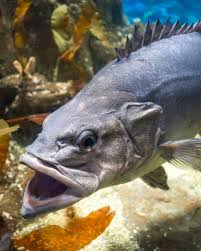Understanding the Atlantic Wreckfish and Its Conservation

The Atlantic Wreckfish: An Overview
The Atlantic wreckfish (Polyprion americanus) is a robust and heavily built fish found primarily in the deep waters of the Atlantic Ocean. Measuring up to 1.5 metres in length and weighing as much as 60 kg, these fish are known for their distinct dark blue to grey colouration and large mouths. They inhabit deep rocky reefs and can often be found at depths of 300 to 1,000 metres, making them elusive and challenging to capture. Their unique biological characteristics and habitat have made them a subject of interest among marine biologists and fishery managers alike.
The Importance of Atlantic Wreckfish
Atlantic wreckfish play an essential role in their ecosystem, functioning as both predator and prey. They contribute to the health and balance of the marine environment. Furthermore, their commercial value, especially in the culinary world, has led to increased interest in their population dynamics. Atlantic wreckfish are sought after for their firm, white flesh and are popular in various cuisines worldwide.
Current Conservation Efforts
Overfishing and habitat destruction have raised concerns regarding the sustainability of Atlantic wreckfish populations. Recognising this, organisations such as the Western and Central Atlantic Fisheries Commission (WCPFC) and the International Commission for the Conservation of Atlantic Tunas (ICCAT) are actively involved in measures aiming to preserve this species. Recent initiatives include setting catch limits, implementing size restrictions, and promoting responsible fishing practices.
Recent Developments
In the past year, scientists and conservationists have reported some promising signs of recovery among Atlantic wreckfish populations in certain regions, thanks to these conservation measures. Specifically, collaborative research efforts focused on determining optimal management strategies for the species have been advancing. Tracking individual fish movements and monitoring their habitats has also provided invaluable insights.
Conclusion: The Future of Atlantic Wreckfish
The Atlantic wreckfish remains a vital species within its ecosystem, and continued efforts for sustainable management are crucial. As consumers become more conscious of the environmental impact of fishing, there is hope that Atlantic wreckfish populations can regenerate and thrive. Educating the public on the importance of marine conservation will play an essential role in safeguarding this remarkable species for future generations, ensuring that it remains a vibrant part of the Atlantic marine ecosystem.
